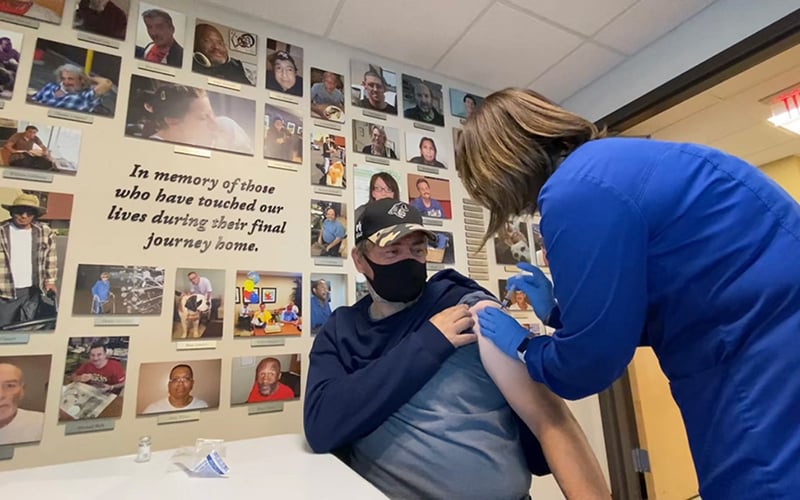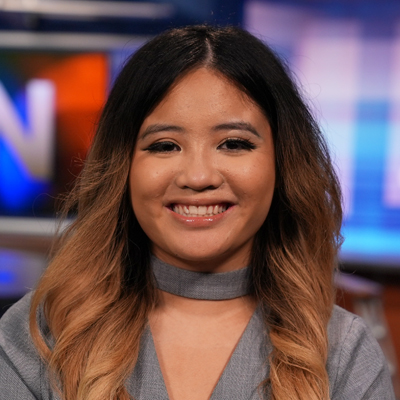
Several billion dollars have been made available through the U.S. Department of Health and Human Services to states, counties and cities, as well as nonprofits, to bolster COVID-19 vaccinations in hard-hit communities and demographic groups. But vaccine equity remains a challenge in some Arizona counties. (File photo courtesy of Circle the City)
PHOENIX – Some Arizona counties continue to grapple with administering COVID-19 vaccines equitably, even as cases spiked across the state in recent months and vaccination rates still lag in rural communities and among some people of color.
Last month, Pinal County supervisors voted 3-2 to reject a $3.4 million grant to help improve vaccine equity and get more shots into the arms of people in need. On Wednesday, supervisors are scheduled to revisit that decision.
Officials said the grant would require the county to hire a health equity coordinator to help increase vaccinations among people of color, those experiencing homelessness, LGBTQ individuals, people with disabilities and in rural communities.
Pinal County is one of the least-vaccinated counties in Arizona, and it’s considered “socially vulnerable” by the Centers for Disease Control and Prevention.
“Just by virtue of location in Pinal County, there are some communities who are underserved, who don’t have access to COVID-19 vaccines,” Tascha Spears, public health director for the county, told supervisors during a September meeting.
“This is specifically to facilitate that, so that communities everywhere truly do have a choice about whether they would like to receive the vaccine or not.”
Ensuring that vaccines are administered equitably has been a priority of the Biden administration and health officials at the federal and state level.
Several billion dollars have been made available through the U.S. Department of Health and Human Services to states, counties and cities, as well as nonprofits, to bolster COVID-19 vaccinations in hard-hit communities and demographic groups.
“Everyone in America should have equal opportunity to be as healthy as possible,” Rochelle Walensky, director of the CDC, said earlier this year, adding that such funding “will be monumental in anchoring equity at the center of our nation’s COVID-19 response – and is a key step forward in bringing resources and focus to health inequities that have for far too long persisted in our country.”
People of color have been more likely to contract COVID-19 and face higher rates of hospitalization and death than white people, yet vaccinations have lagged, especially among Hispanics and African Americans. Research also shows that vaccination rates are lower in rural areas of the country.
Across Arizona, 27% of COVID-19 cases occurred in Hispanics, and 18% of Hispanics in the state have at least one vaccine shot, according to the state health department.
Thirty-one percent of Pinal County residents are Hispanic, while 5% are Native American. Part of the Gila River Indian Community is within the county.
Among Arizona’s 15 counties, Pinal ranks No. 11 in the percentage of residents fully vaccinated against COVID-19. Just 46% of the county’s 455,000 residents have been fully vaccinated against COVID-19.
At the same time, the county ranks high on the CDC’s “social vulnerability index,” which uses such factors as socioeconomic status, race and ethnicity, transportation availability and housing to identify communities that need support.
Supervisor Kevin Cavanaugh was among those who opposed the funding last month. He questioned whether there was a problem that actually needed to be addressed with this money, given that the vaccines are free and available at pharmacies, grocery stores and elsewhere.
“The questions I’m getting from my constituents are: ‘We have Walgreens, Walmart. Everybody knows that there are free vaccines.’ Did we identify people through a survey or man on the street interviews to determine we actually had a problem?” he said.
In an interview Monday, Cavanaugh took issue with the grant’s requirement to specifically hire someone focused on equity.
“The equity coordinator position assumes that structural racism has influenced every decision in government,” he said. “And I can’t speak for every government throughout the nation, but I think in Pinal County, we don’t allow a person’s skin color or economic status or sexual orientation to be a part of any decision where we provide services to the public.”
If the county does have an issue getting vaccines to people, Cavanaugh said, he’d prefer a “local solution that is fiscally responsible.” He hopes the board rejects the grant again.
Stephen Miller, board chairman, said in an interview that many communities in the county aren’t in close proximity to a vaccine administration site. With the grant money, he said, the county could set up temporary locations in remote areas to increase vaccine delivery.
“The argument was, well, you can get a vaccine wherever you want, whenever you want. But that’s not necessarily true, particularly when you take the eastern side of our county,” Miller said. “There’s not a Walgreens up there, there’s not a CVS up there, there’s not a Fry’s up there. … And I can tell you, to drive 25 miles is something that comes out of their wallet for gas.
“I just kind of need to know, is this going to be good for the people that I represent? I think it is.”
Neighboring Pima County, meantime, recently accepted $9.5 million in grant money to increase vaccine access and equity, according to Crystal La Tour Rambaud, vaccine and preventable disease program manager for the county.
Rambaud said her county is prioritizing equity related to COVID-19 and other diseases.
“We have other programs that deal with and work towards health equity as a general concept, and we definitely identify that as a priority for us,” she said.
About 60% of Pima County residents are fully vaccinated – the fifth-highest rate in the state, according to the CDC. Rambaud said people remain unvaccinated for many reasons, including misinformation, fear and lacking immediate access.
With the grant money, the Pima County Health Department is hiring several dozen people, including new community health workers, coaches and public health nurses.
“What’s going to happen is that all those people will be broken into teams, and then they’ll be assigned supervisor districts,” Rambaud said. Once divided up, the teams can then focus on how to best serve those individual communities with regards to vaccination.
And, despite some difficulties with hiring in such a competitive job market, Rambaud said she’s optimistic about the future of the program.
“We know that the main objective of the grant is vaccine access, and we know that there’s hesitancy out there. We know that there’s a lot of barriers to service. But I also think that we know how to identify strategies to work around some of those barriers, and we have a lot of experience serving this community. I have no doubt we’ll be able to make a positive impact.”



